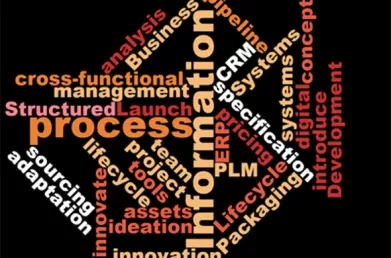Benefits Focused ERP: A Balanced Approach
At Lumenia we always try to focus our clients’ efforts on delivery of benefits. The basic premise of the argument is that a project that has been delivered on time and on budget cannot be considered successful unless it has delivered the benefits it set out to.
In fact we would argue that, within reason, benefit delivery is more important than either time or budget.

The first assumption here, of course, is that expected benefits have been defined in the first place. Thus, all of our efforts, throughout the information systems life cycle in an organisation - from planning through procurement, delivery and operation - are focused on defining the benefits that a given ERP Strategy should deliver, and building benefits assurance techniques and measures into all future efforts to execute that strategy.
Given this entirely reasonable, though surprisingly uncommon, world view, the question arises how to identify and quantify the benefits that your ERP project should deliver.
Quantification is relatively straight forward at first glance. You take a benefit, ensure that there are means to deliver it and estimate its impact. An example might be reducing Days Sales Outstanding (DSO) and the means to deliver it might be a set of functionalities that enable a more efficient billing process. Once the estimated reduction is known the expected saving can be calculated. All such savings can be fed into an investment appraisal (along with estimated costs). Net Present Value, Internal Rate of Return, Payback Period or whatever appraisal technique is favoured in your organisation can be calculated.
The problem is that quantifiable measures like reduced DSO, reduced inventory holding and better achievement of settlement discounts are not always to be found. It largely depends on the efficiency of your existing business processes.
This brings us back to the initial motivations for considering the project:
- was it operational (e.g. to improve the efficiency of production processes)?
- was it tactical (e.g. to provide process integration to support e-commerce development in order to match competitors offerings)?
- was it strategic (e.g. to build a group-wide financial consolidation platform to enable the efficient on-boarding of likely future acquisitions and expansions)?
These high-level motivations are at level of abstraction that is slightly zoomed out from benefits that can be measured. However, they will influence whether measurable benefits can be found at a lower level of analysis.
It has been argued that the further you are along a continuum that runs from operational motivation to strategic motivation the more difficult it is to identify benefits that are either tangible or quantifiable. Unless you have a perfect organisation there will always be some tangible and quantifiable benefits to be found, but the more strategic your motivations the more likely that the most important benefits will be intangible and difficult to quantify.
That is not to underestimate the importance of intangible or unquantifiable benefits. Intangible benefits that enable the execution of an organisation’s strategy will help to deliver huge financial rewards (assuming that is a planned outcome of the strategy) – the problem for an investment appraisal is that the link between the investment and the financial reward is not explicit enough or complete enough to warrant its inclusion in a financial appraisal.
All of this means that while benefits focus is critical in the planning and execution of an erp strategy, and erp benefits quantification is key to enabling measurement of project success, quantification should not distract from or be confused with benefits focus. A well-executed benefits assessment should consider all of the benefits to be delivered by an information systems strategy, tangible and intangible, quantifiable and unquantifiable. Execution of that strategy can then focus on benefits, whatever their original motivation.
This blog was written by Ian O’Toole, Managing Partner at Lumenia. If you would like further information on ERP Strategy or Benefits Quantification please send an e-mail to Ian O’Toole.


